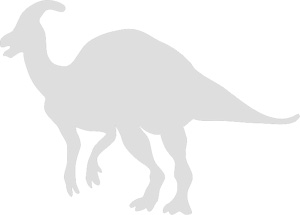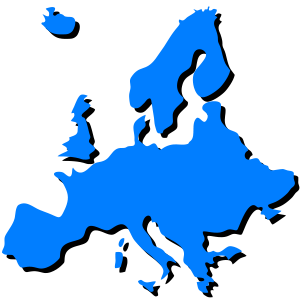Every month, 100,000 readers use the Dinosaur Database, but we receive no support from you. Developing and updating the database requires a lot of work. If you want it to remain open and be updated, please support us via the "Buy us a coffee" button available on every page or via the Support page.
Dinosaur: Obelignathus septimanicus

| Length*: | 1.9 m | 6.2 ft |
| Weight*: | 2 kg | 4 lb |
*The largest known specimen
Period
Epoch: Late Cretaceous
Stage: Campanian-Maastrichtian
Years: 72-70 Ma
Details
Status: valid
Author: Czepiński & Madzia
Year: 2025
Distribution
Area: Europe
Country: France
Region: Montouliers
Formation: Argiles et Grès à Reptiles
Description
Obelignathus septimanicus
Obelignathus septimanicus is a medium-sized ornithopod dinosaur from the Late Cretaceous (upper Campanian–lower Maastrichtian), known from the ‘Grès à Reptiles’ Formation of southern France. Originally described in 1991 as Rhabdodon septimanicus, it was reinterpreted and assigned to a new genus in 2025 based on a detailed reanalysis of its unique dentary morphology. The genus name Obelignathus combines a reference to the strongman Obélix from French comic culture and the Greek word gnáthos (“jaw”), emphasizing the unusually robust dentary of the holotype.
This species exemplifies the growing evidence for greater diversity among European rhabdodontomorphs than previously recognized and provides insight into Late Cretaceous endemism on the European archipelago.
Geographic Coordinates
The holotype (MDE D30) was found near Montouliers, Saint-Chinian commune, Hérault, southern France.
Physical Characteristics
Obelignathus septimanicus is known from a robust right dentary (holotype MDE D30), measuring approximately 105.5 mm (4.15 inches) in preserved length, with an estimated complete length of 130–140 mm (5.1–5.5 inches). Although the overall body length is unknown due to limited material, comparison with other rhabdodontids suggests it may have reached 2–3 meters (6.5–10 feet).
The dentary is:
- Approximately three times longer than tall (compared to the usual 4:1 ratio in other rhabdodontomorphs),
- Broad lateromedially and deep dorsoventrally,
- Lacking a buccal platform and crest—traits typical in later rhabdodontoids such as Rhabdodon, Mochlodon, and Zalmoxes.
Unique autapomorphies include:
- A lateroposteriorly rotated coronoid process.
- A deep Meckelian canal occupying up to 50% of the medial dentary wall height.
- Posteriormost alveoli located anteriorly to the coronoid process, not laterally displaced.
These features mark Obelignathus as a highly distinct taxon, morphologically separate from other known European rhabdodontids.
Diet and Feeding Habits
As an herbivorous ornithopod, Obelignathus likely consumed tough, fibrous plants. The dentition features ridged replacement teeth similar to those in Rhabdodon and Mochlodon, but fewer secondary ridges than in Zalmoxes. The unique orientation of the coronoid process suggests it may have used a modified jaw-closing mechanism, possibly producing stronger posterior biting forces or different adductor muscle angles compared to related taxa. However, its jaw anatomy suggests divergent feeding mechanics:
- The insertion sites for jaw adductor muscles differ in orientation, implying a transversely broader and more posteriorly active bite.
- The reduced buccal crest may indicate weaker superficial adductor musculature.
These modifications suggest a different jaw function and feeding strategy compared to sympatric ornithopods, possibly reflecting dietary niche partitioning.
Habitat and Distribution
Obelignathus septimanicus lived on the Ibero-Armorican island of the Late Cretaceous European archipelago. The ‘Grès à Reptiles’ Formation records a mosaic of fluvial, lacustrine, and coastal environments. Coeval fauna from this unit include:
- Other rhabdodontomorphs (Rhabdodon priscus)
- Nodosaurids (Struthiosaurus)
- Dromaeosaurids
- Crocodyliforms and freshwater turtles
This setting supported high endemism and species richness, reflecting the ecological isolation of Late Cretaceous Europe.
Behavior and Social Structure
While behavioral evidence is lacking, comparative anatomy and size suggest that Obelignathus was a relatively slow, terrestrial browser. The unique structure of its jaw may have enabled it to exploit plant resources unavailable to other rhabdodontomorphs. It likely lived solitarily or in small groups.
Discovery and Research
The holotype (MDE D30) was described by Buffetaut & Le Loeuff in 1991. Initially assigned to Rhabdodon, its distinctiveness was long debated. In 2025, a reanalysis by Czepiński and Madzia confirmed that it does not belong to Rhabdodon and warranted the creation of a new genus, Obelignathus.
Multivariate and phylogenetic analyses placed Obelignathus as a highly divergent member of Rhabdodontomorpha, or possibly even as an early member of the elasmarian lineage, though the latter placement is considered less likely due to data limitations.
Significance and Notable Facts
- Known from one of the most robust dentaries among rhabdodontomorphs.
- Lacks key features such as a buccal crest or platform, rare among related taxa.
- Suggests a unique feeding strategy, not seen in other European iguanodontians.
- Enhances understanding of taxonomic disparity and ecological diversity in the Late Cretaceous European archipelago.
- Highlights the underappreciated morphological variation among so-called “small ornithopods” in Late Cretaceous France.
Conclusion
Obelignathus septimanicus is a morphologically distinct rhabdodontomorph, notable for its robust, short, and uniquely structured dentary. Its anatomy suggests functional divergence in feeding behavior and underscores the underestimated diversity of Late Cretaceous European ornithopods. As more material is reassessed and discovered, Obelignathus will likely play a critical role in reconstructing both the evolution and paleoecology of the endemic European dinosaur fauna.
Locations
Sources
Material: Right dentary (holotype MDE D30; partially preserved: missing the anteriormost portion), including eight posterior alveoli, several replacement teeth, and a well-preserved coronoid process.
References: Czepiński, Łukasz; Madzia, Daniel (2025-04-30). "Exploring the diversity and disparity of rhabdodontomorph ornithopods from the Late Cretaceous European archipelago"



